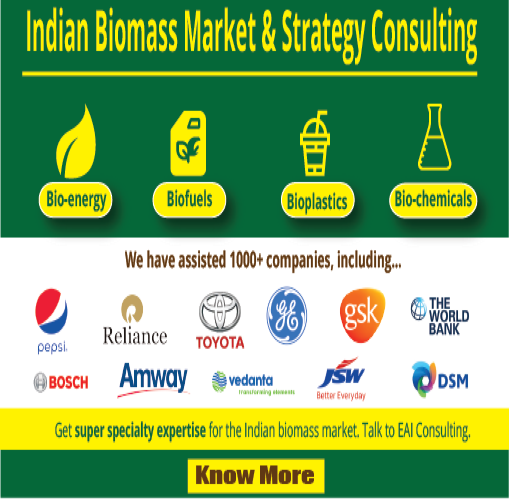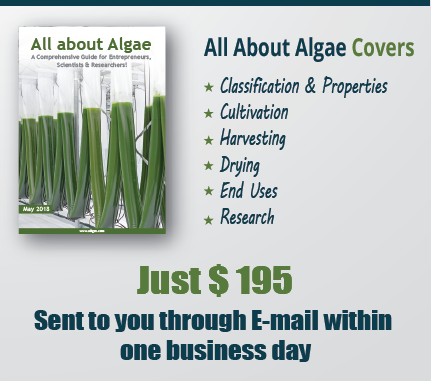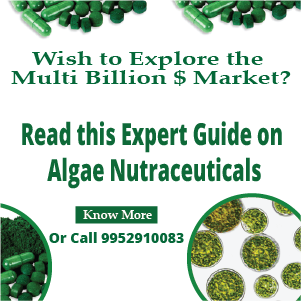Gathering algae consists of separating algae from the growing medium, drying, and processing it to obtain the desired product. Separating algae from its medium is known as harvesting. Harvesting methods depends primarily on the type of algae. The high water content of algae must be removed to enable harvesting. The most common harvesting processes are flocculation, microscreening and centrifugation. These must be energy-efficient and relatively inexpensive so selecting easy-to harvest strains is important.
Macroalgae harvesting employs manpower whereas, microalgae can be harvested using microscreens, centrifugation, flocculation or by froth flotation.
See the following pages on Algae Harvesting:
Latest Research
A highly efficient froth flotation procedure has been developed for harvesting algae from dilute suspensions by Gilbert et.al. Harvesting is carried out in a long column containing the feed solution which is aerated from below. A stable column of foam is produced and harvested from a side arm near the top of the column.
http://www.ncbi.nlm.nih.gov/pmc/articles/PMC1057831/
A study suggest that suspended air flotation (SAF) could harvest algae with a lower air:solids (A/S) ratio, lower energy requirements, and higher loading rates compared to dissolved air flotation (DAF) ( P < 0.001). Identification of a more efficient algal harvesting system may benefit Wastewater Treatment plants by enabling cost effective means to reduce solids content of the final effluent. Furthermore, use of SAF to harvest commercially grown Chlorella and Scenedesmus may reduce manufacturing costs of algal-based products such as fuel, fertilizer, and fish food.
http://www.ingentaconnect.com/content/wef/wer/2009/00000081/00000007/art00008
The dispersed air flotation (DiAF) process was utilized to separate algal cells (Chlorella sp.) from water. Two types of collector, cationic N-cetyl-N,N,N-trimethylammonium bromide (CTAB) and anionic sodium dodecylsulfate (SDS), were used. It was observed that 20% of cell removal was achieved in the presence of 40 mg/L of SDS, and ca. 86% of the cells were removed at 40 mg/L of CTAB. Upon the addition of 10 mg/L of chitosan, over 90% of the cells were removed when SDS (20 mg/L) was used as the collector. Air flow rate affected cell flotation slightly. Optimum pH values for cell flotation were from 4.0 to 5.0. Flotation efficiency decreased at high ionic strength. The electrostatic interaction between collector and cell surface plays a critical role in the separation processes.
http://www.informaworld.com/smpp/content~content=a713731663&db=all
Algae Venture Systems Harvester - Harvesting, Dewatering & Drying (HDD) consists of two belts moving in opposing directions. Solution containing the desired solid is poured through a spout on to the top belt, which is moving from left to right on the schematic. Water passes through the belt, while the solid remains on top. A capillary belt moving in a countercurrent direction passes directly underneath the first belt. The capillary belt is wetted and helps draw the water through the top belt using liquid adhesion.
Related Links:
- Harvesting of Algae by Froth Flotation
- Improved Algal Harvesting Using Suspended Air Flotation
- Harvest of Planktonic Marine Algae by Centrifuga Tion into Gradients of Silica in the Cf-6 Continuous-Flow Zonal Rotor
- Harvesting of Algae Grown on Raw Sewage
- Algal Biomass Harvesting From the Integrated Algal Ponding System (Iaps) for Horticultural Nutrient Enrichment



